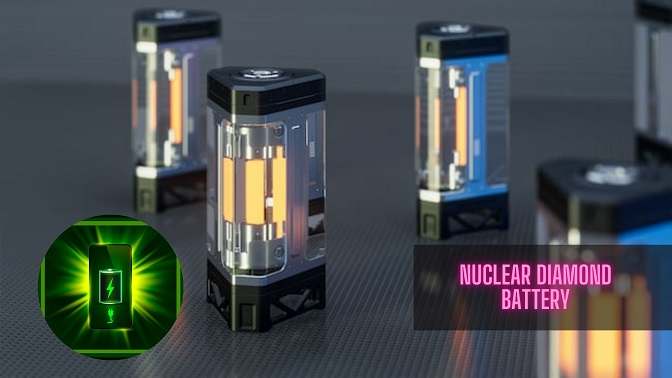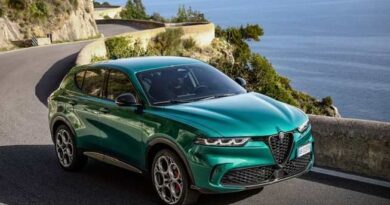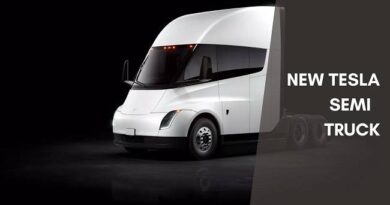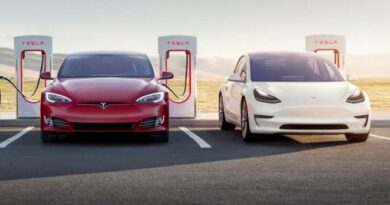NDB’s New Nuclear Diamond Battery FINALLY Hit the EV industry
NDB’s New Nuclear Diamond Battery FINALLY Hit the EV industry
The world has been waiting for a long time to see a new nuclear diamond battery that can overcome the limitations of conventional batteries. Well, folks, it’s finally here.
NDB’s nuclear diamond battery is going to change everything. The company has spent several years developing this battery technology, and now they’re ready to release what they believe will be a revolutionary energy source.

What are nuclear diamond batteries, and what’s so exciting about NDB’s battery tech?
Join us in this article as we discuss NDB’s nuclear diamond battery insane new nuclear diamond battery.
Are nuclear batteries the future?
The mention of nuclear diamond battery often makes people uncomfortable because of the dangerous radiation they emit.
However, the future’s energy supply may come from the waste produced by the nuclear energy production process.
In the future, nuclear batteries could wind up powering everything from electric cars to cell phones and military drones.
Nuclear diamond batteries are a significant improvement far above conventional lithium-ion batteries that surround us.
Although lithium-ion batteries undeniably played a significant part in the growth of electronic devices, they have certain fundamental flaws that push scientists to continue for new batteries.
Flaws of Lie Ions the flaws of lithium-ion batteries are most visible in electric vehicles.
Due to their poor energy density, lithium-ion batteries must be large enough to give adequate driving ranges.
However, they still lag behind gas-powered vehicles in terms of distance covered on a full tank.
That has led many people to remain skeptical of electric vehicles. Furthermore, most lithium-ion batteries are susceptible to aging.
Yet many manufacturers are silent about the issue. Whether or not the battery is being used, there will be some capacity loss after a year. The battery life is two or three years.
One major drawback of lithium-ion batteries is the high cost. They typically cost about 40% more to produce than nickel-cadmium cells.
That is an important consideration when contemplating their use in mass-produced consumer items, where any additional expenses are a huge concern.
Although costs have decreased significantly, batteries are still the most expensive part of an electric car.
Electric vehicles are much more costly than their Ice counterparts due to the battery and thus being out of range for the vast majority of car owners.
Additionally, charging lithium-ion batteries requires a lot of time. Even with the fastest charger, you could be stuck in one place for close to an hour to recharge the battery.
Change Ev industry
That is inconvenient when compared to filling up an Ice car’s gas tank, which takes only minutes.
All lithium-ion batteries also struggle with degradation, which causes a gradual loss of power over time after a few years of usage.
Smartphone batteries, for instance, may find it difficult to maintain a good charge, which may demand the replacement of these batteries with new ones to keep the smartphone functioning properly.
The Search for New nuclear diamond battery Technologies all aspects of modern life, from transportation to telecommunications to even space technology, are highly dependent on small battery-powered gadgets.
Manufacturers are under constant pressure to create batteries that are both inexpensive and functional.
Scientists have been testing a wide variety of battery materials and chemistry in an attempt to create the perfect battery.
For instance, scientists and engineers have been developing sodium batteries, which replace both lithium and cobalt used in current lithium-ion batteries with cheaper, more environmentally friendly sodium.
In recent times, solid-state batteries have drawn more attention. These batteries have various benefits, including enhanced safety, increased longevity, better energy density, and many more.
None of these battery solutions, however, can compete with nuclear diamond batteries. In terms of durability, nuclear diamond batteries reduce potential safety risks.
In addition to being eco-friendly and having a lifespan of thousands of years.
Nuclear Diamond Batteries in 2016, a group of researchers, physicists, and chemists at the University of Bristol began working on what would later become known as radioactive diamond batteries.
This group of scientists developed nuclear diamond batteries, which can power devices for over 10 years while charging themselves.
Just imagine your smartphone battery lasting thousands of years. These researchers presented their idea as a betavoltaic device, which means it’s powered by the beta disintegration of nuclear waste.
Beta decay is a form of radioactive decay that occurs when an atom’s nucleus has an excess of particles and releases some of them to achieve a more stable Proton solution ratio.
That produces a type of ionizing radiation known as beta radiation, which consists of a large number of high-speed and high-energy electrons, or positrons, known as beta particles.
A beta-voltaic cell is made up of tiny layers of radioactive material wedged between semiconductors.
As the nuclear material degrades, it releases beta particles that displace electrons in the semiconductor and produce an electric current.
However, the power density of the radioactive source decreases as it moves away from the semiconductor.
As a result, nuclear diamond battery are normally less effective than conventional battery types.
However, this problem can be solved by using polycrystalline diamonds. Radioactive batteries are created via a process known as chemical vapor deposition, which is also used to create fake diamonds.
Researchers have altered the procedure to produce radioactive diamonds by employing radioactive methane containing the radioactive element carbon 14, which is present on Irradiated reactor graphite blocks.
These diamonds can function as a semiconductor and a radioactive source.
When exposed to beta radiation, it will produce a long-lasting battery that doesn’t require a recharge.
It can recharge itself for years with little to no detectable degradation over hundreds of years, thanks to the radioactive waste that occupies it.
In theory, this would allow a single battery to be used for over a thousand years without being replaced or recharged.
Nuclear diamond batteries have many advantages over their lithium-ion counterparts.
They can be charged at room temperature without having to deal with dangerous chemicals or heat.
As such, they’re safe to use around humans and animals alike. Over the years, several companies have delved into the research of nuclear diamond batteries.
One of the companies actively involved with nuclear diamond batteries is the US startup Nano Diamond battery or NDB.
The company has developed a radioactive diamond battery that it claims will run for 280 years.
NDB’s Nuclear Diamond Battery To create its nanodiamond battery, NDB combines radioactive isotopes from nuclear waste with layers of paneled nanodiamonds.
Microsized SingleCrystal diamonds carry heat away from radioactive isotope materials so quickly that the radiation generates electricity.
NDB powers its nuclear voltaic cell with a variety of radioisotopes to convert energy from various sources of radiation.
That is made possible by the technology’s unique and adjustable design, which is also compatible with any potential radioisotopes. NDB generates energy like a solar cell.
However, it does so using radiation from radioactive decay rather than sunlight. Additionally, it also can store the radiation’s energy.
The NDB battery consists of three major components isotope, transducer, and storage unit.
The radioactive isotope breaks down and releases radiation, which the transducer converts into power.
Excess energy is saved in the storage unit for future use. Unlike chemical batteries, which need to be recharged by external power, NDB is a self-sufficient power source.
The company’s batteries are built on high-powered diamond-based AlphaBeta and neutron voltaic formulas for extended life and green energy.
It aims to offer long-term independent power for everything from tiny insulin pumps to space rovers navigating the depths of space.
The company uses blue diamonds because of their high heat conductivity, which makes them ideal for electronic devices.
They are three to four times more efficient than copper or silver and are known to be the most effective natural heat conductor.
The procedure used to make these diamonds is known as chemical vapor deposition, which uses gasses at very high temperatures to cause carbon to crystallize on a substrate material.
However, this method creates diamonds that are more conductive and have a bluer color than typical diamonds.
NDB first obtains nanodiamonds and then processes nuclear waste to produce radioactive isotopes.
NDB uses radioactive isotopes of uranium and plutonium from nuclear power plants. They generate electricity by transferring heat away from the radioactively decaying isotopes.
The NDB transducer stores the energy from the decay sources and converts the kinetic energy of the released radiation into electrical energy.
Each battery cell only has a small quantity of energy, but the batteries are utilized in huge amounts to frequently power big machinery.
The company has also addressed the safety concerns raised due to the use of radioactivity and nuclear waste.
According to the company, the DNV stacks, along with the source, are coated with a layer of polycrystalline.
Diamond is known for being the most thermally conductive material, can contain radiation within the device, and is the hardest material twelve times tougher than stainless steel.
That makes our product extremely tough and tamper-proof. NDB has created a technology that’s so powerful and potentially groundbreaking that it comes anywhere close to living up to its claims.
The world could see a huge shift from conventional energy sources to nuclear power.
While the company hasn’t revealed much information about how thenuclear diamond battery works, NDB’s Nuclear Diamond battery is poised to change the entire world, and it’s something everyone should be excited about.
Related Post



